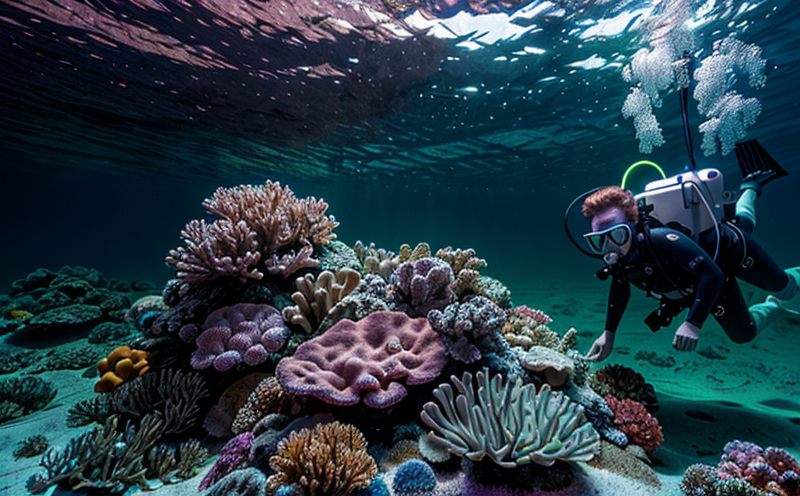EN 12464 Lighting Performance Testing of Marine Indoor Work Areas
The European Standard EN 12464 sets out a comprehensive framework for ensuring that lighting systems installed in marine indoor work areas meet the necessary performance requirements. This standard is essential for maintaining safety, comfort, and efficiency in environments where visibility is critical. The standard applies to various types of lighting fixtures used within enclosed spaces such as ship cabins, engine rooms, galley areas, and maintenance workshops.
One key aspect of EN 12464 is the emphasis on providing adequate light levels for visual tasks performed by crew members and other personnel working in these environments. The standard defines specific luminance requirements based on task characteristics and location within the ship to ensure that workers can perform their duties safely and effectively, even under challenging conditions like reduced visibility due to fog or heavy rain.
The testing process outlined in EN 12464 involves several stages aimed at evaluating different aspects of lighting performance. Initially, there is an assessment of the initial luminous flux emitted by the light source, which helps determine whether it meets the expected output levels specified for each type of application. Following this, measurements are taken to evaluate how well the installed lighting system maintains its performance over time through regular maintenance cycles.
Another critical component of EN 12464 is the evaluation of glare control measures implemented in the design and installation of fixtures. Excessive glare can significantly impair visibility and cause discomfort for occupants, potentially leading to accidents or errors during operations. By specifying maximum permissible glare values depending on factors such as viewing angles and ambient light conditions, the standard aims to minimize these risks while enhancing overall occupant satisfaction.
Finally, EN 12464 also addresses energy efficiency considerations by recommending appropriate light levels that balance illumination needs with power consumption. This ensures sustainability practices are integrated into maritime lighting design, helping operators reduce operational costs and environmental impact without compromising safety standards.
The rigorous testing procedures prescribed by EN 12464 play a crucial role in safeguarding the health, welfare, and productivity of seafarers operating within confined spaces onboard vessels. Compliance with this standard not only demonstrates commitment to high-quality lighting solutions but also enhances reputation among stakeholders who value safety and performance excellence.
International Acceptance and Recognition
EN 12464 has gained significant recognition across the international maritime industry as a benchmark for ensuring safe and efficient lighting in marine indoor work areas. Many shipyards, port authorities, and regulatory bodies around the world have adopted this standard due to its comprehensive approach and robust technical requirements.
- Regulatory Compliance: Numerous countries have incorporated EN 12464 into their national regulations or guidelines for maritime facilities, making it a de facto requirement for compliance with local standards.
- Safety Certification: Leading certification organizations like Lloyd's Register and Det Norske Veritas incorporate the principles of EN 12464 when assessing the suitability of lighting systems for use in marine environments.
- Industry Adoption: Shipbuilding companies, naval architects, and engineering firms frequently reference this standard during design phases to ensure they meet both local and international expectations regarding lighting performance.
The widespread acceptance of EN 12464 reflects its importance in promoting best practices that enhance safety, comfort, and efficiency for all personnel working within marine indoor work areas. By aligning with these internationally recognized standards, organizations can build trust among clients, stakeholders, and regulatory bodies while demonstrating their commitment to excellence in lighting design.
Competitive Advantage and Market Impact
Adopting EN 12464 as part of your quality management strategy offers numerous competitive advantages that can differentiate you from competitors in the maritime sector. Here are some key benefits:
- Enhanced Safety Performance: By meeting the stringent requirements set forth by EN 12464, you ensure compliance with international standards, thereby enhancing your reputation for delivering safe and reliable products.
- Promotion of Sustainability: The emphasis on energy efficiency within this standard helps reduce operational costs while contributing positively to environmental sustainability efforts.
- Better Customer Satisfaction: Meeting these stringent lighting performance criteria translates into improved user experience, which contributes directly to increased customer satisfaction and loyalty.
- Increased Market Share: Demonstrating adherence to internationally recognized standards like EN 12464 can open doors to new markets where regulatory compliance is a significant factor in purchasing decisions.
The implementation of EN 12464 also fosters innovation within your organization by encouraging continuous improvement processes aimed at exceeding the specified performance levels. This proactive approach not only strengthens your competitive position but also positions you as a leader in sustainable and safety-conscious practices within the maritime industry.
Use Cases and Application Examples
The application of EN 12464 lighting performance testing is particularly relevant for various types of marine indoor work areas, including but not limited to:
- Cabins: Ensuring adequate light levels are maintained throughout extended periods at sea.
- Engine Rooms: Providing illumination that allows precise machinery operation and maintenance activities under challenging conditions.
- Galley Areas: Supporting food preparation tasks while minimizing glare interference with cooks' visibility.
- Maintenance Workshops: Facilitating safe repair operations through optimal lighting distribution across work surfaces and tool storage areas.
In practice, our laboratory follows a structured testing protocol that involves several steps to evaluate different parameters of the installed lighting systems. For instance, initial luminous flux measurements are conducted using high-precision photometers placed at specific angles relative to the fixtures being tested. These instruments capture accurate data points representing both direct and diffuse light outputs.
Glare control evaluations follow similar procedures involving specialized equipment designed to quantify perceived brightness levels experienced by users when looking directly into or near sources of strong illumination. Additionally, we perform long-term stability tests to assess how well the lighting system retains its performance characteristics over extended usage periods.
The final step in our comprehensive testing process is an analysis of energy consumption patterns associated with each fixture type and configuration tested. This helps identify potential areas for optimization aimed at reducing operational costs while maintaining or improving overall lighting quality.





